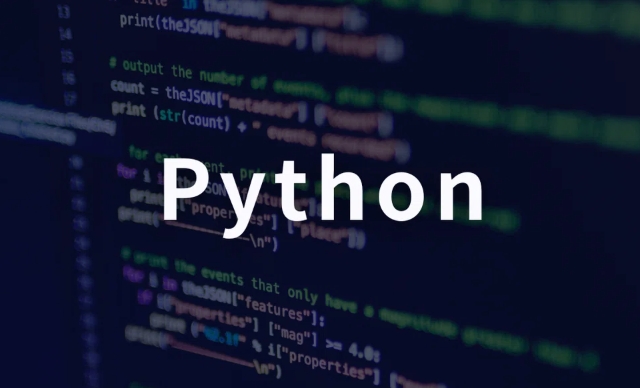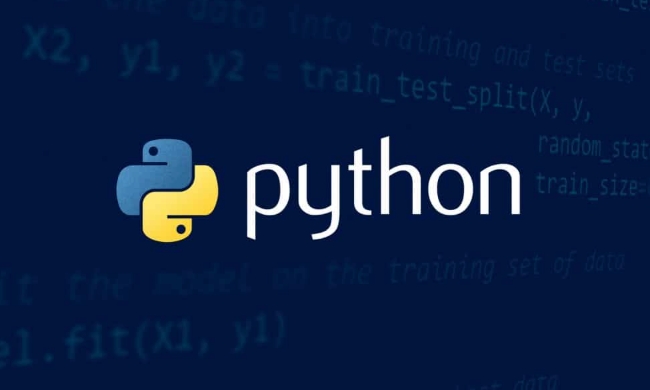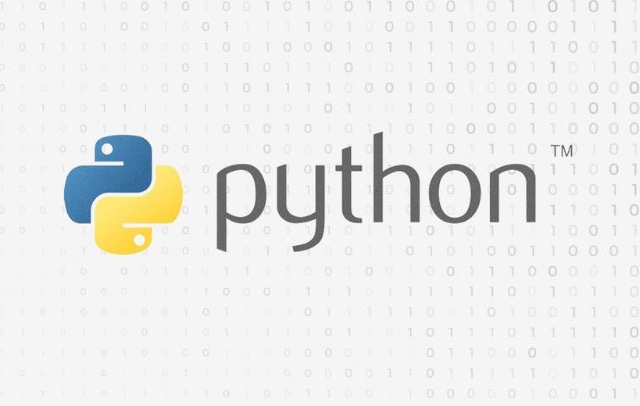Python multithreading is suitable for I/O-intensive tasks. 1. It is suitable for scenarios such as network requests, file reading and writing, user input waiting, etc., such as multi-threaded crawlers can save request waiting time; 2. It is not suitable for computing-intensive tasks such as image processing and mathematical operations, and cannot operate in parallel due to global interpreter lock (GIL). Implementation method: You can create and start threads through the threading module, and use join() to ensure that the main thread waits for the child thread to complete, and use Lock to avoid data conflicts, but it is not recommended to enable too many threads to avoid affecting performance. In addition, the ThreadPoolExecutor of the concurrent.futures module provides a simpler usage, supports automatic management of thread pools, asynchronous results acquisition, and map-based functions. Common problems include misunderstanding the role of GIL, unlocked shared variables, forgetting the join and too many threads lead to resource competition, which needs to be checked through logs or debugging tools.

Python's multi-threading implementation is actually a bit special. Many people initially thought it could make full use of multi-core CPUs like other languages, but in fact, it was not ideal. The main reason is that Python has a global interpreter lock (GIL), which restricts only one thread to execute Python bytecode at the same time. However, this does not mean that multithreading is useless in Python, there are still many scenarios that can be used.

What scenarios is multithreading suitable for?
Python's threading module is suitable for I/O-intensive tasks , such as network requests, file reading and writing, waiting for user input, etc. This kind of task is waiting for external resources most of the time. At this time, the switching thread will not be affected by GIL, but can improve overall efficiency.
For example: If you want to crawl data from multiple websites and each request has to wait for a few seconds to respond, then opening several threads to send requests at the same time can save a lot of time.

- Web crawler
- Log collection and processing
- Prevent interface stuttering in GUI applications
It is not recommended for calculation-intensive tasks (such as image processing, large amounts of math operations), because these tasks will be stuck with GIL and cannot be truly parallel.
How to use threading to implement multi-threading?
Using threading is the most straightforward way. The basic process is to create a thread object, specify the objective function, and then start the thread.

import threading
def worker():
print("Worker is running")
threads = []
for i in range(5):
t = threading.Thread(target=worker)
threads.append(t)
t.start()A few points to note:
- If you want all child threads such as the main thread to complete, you can add
t.join() - When sharing data, use locks (
threading.Lock()) to avoid conflicts. - It is not recommended to open too many threads, as dozens of them are almost the same, too many will slow down performance.
Is there a simpler way to write it? Try concurrent.futures
If you don't want to manually manage thread lifecycles, consider ThreadPoolExecutor in the concurrent.futures module, which is more concise and easier to control the number of concurrency.
from concurrent.futures import ThreadPoolExecutor
def fetch_url(url):
# Simulate a network request return f"Response from {url}"
urls = ["https://example.com/1", "https://example.com/2"]
with ThreadPoolExecutor(max_workers=5) as executor:
results = list(executor.map(fetch_url, urls))This method has several advantages:
- Automatically manage thread pool size
- Supports asynchronous results (via Future objects)
- It is easier to use with map, as_completed functions and other functions
Multi-threading pit
Although it is simple to use, there are some places that are prone to problems, especially for beginners.
- GIL's misunderstanding : I thought that I could run the CPU by opening multiple threads, but in fact, it was not very helpful to CPU-intensive tasks.
- Shared variables are not locked : multiple threads modify a variable at the same time may cause data confusion.
- Forgot join : The main thread ends too fast and the child thread is killed before it has been executed.
- Too many threads : Excessive concurrency can lead to resource competition and context switching overhead.
When encountering these problems, you might as well print the log first to see the thread execution order, or use debugging tools to observe the thread status.
Basically that's it. Python's multi-threading is not omnipotent, but it is still very practical in suitable scenarios. Mastering its scope of application and usage can make your program handle some tasks more efficiently.
The above is the detailed content of Implementing multi-threading in Python. For more information, please follow other related articles on the PHP Chinese website!

Hot AI Tools

Undress AI Tool
Undress images for free

Undresser.AI Undress
AI-powered app for creating realistic nude photos

AI Clothes Remover
Online AI tool for removing clothes from photos.

Clothoff.io
AI clothes remover

Video Face Swap
Swap faces in any video effortlessly with our completely free AI face swap tool!

Hot Article

Hot Tools

Notepad++7.3.1
Easy-to-use and free code editor

SublimeText3 Chinese version
Chinese version, very easy to use

Zend Studio 13.0.1
Powerful PHP integrated development environment

Dreamweaver CS6
Visual web development tools

SublimeText3 Mac version
God-level code editing software (SublimeText3)

Hot Topics
 How to handle API authentication in Python
Jul 13, 2025 am 02:22 AM
How to handle API authentication in Python
Jul 13, 2025 am 02:22 AM
The key to dealing with API authentication is to understand and use the authentication method correctly. 1. APIKey is the simplest authentication method, usually placed in the request header or URL parameters; 2. BasicAuth uses username and password for Base64 encoding transmission, which is suitable for internal systems; 3. OAuth2 needs to obtain the token first through client_id and client_secret, and then bring the BearerToken in the request header; 4. In order to deal with the token expiration, the token management class can be encapsulated and automatically refreshed the token; in short, selecting the appropriate method according to the document and safely storing the key information is the key.
 How to test an API with Python
Jul 12, 2025 am 02:47 AM
How to test an API with Python
Jul 12, 2025 am 02:47 AM
To test the API, you need to use Python's Requests library. The steps are to install the library, send requests, verify responses, set timeouts and retry. First, install the library through pipinstallrequests; then use requests.get() or requests.post() and other methods to send GET or POST requests; then check response.status_code and response.json() to ensure that the return result is in compliance with expectations; finally, add timeout parameters to set the timeout time, and combine the retrying library to achieve automatic retry to enhance stability.
 Python variable scope in functions
Jul 12, 2025 am 02:49 AM
Python variable scope in functions
Jul 12, 2025 am 02:49 AM
In Python, variables defined inside a function are local variables and are only valid within the function; externally defined are global variables that can be read anywhere. 1. Local variables are destroyed as the function is executed; 2. The function can access global variables but cannot be modified directly, so the global keyword is required; 3. If you want to modify outer function variables in nested functions, you need to use the nonlocal keyword; 4. Variables with the same name do not affect each other in different scopes; 5. Global must be declared when modifying global variables, otherwise UnboundLocalError error will be raised. Understanding these rules helps avoid bugs and write more reliable functions.
 Python FastAPI tutorial
Jul 12, 2025 am 02:42 AM
Python FastAPI tutorial
Jul 12, 2025 am 02:42 AM
To create modern and efficient APIs using Python, FastAPI is recommended; it is based on standard Python type prompts and can automatically generate documents, with excellent performance. After installing FastAPI and ASGI server uvicorn, you can write interface code. By defining routes, writing processing functions, and returning data, APIs can be quickly built. FastAPI supports a variety of HTTP methods and provides automatically generated SwaggerUI and ReDoc documentation systems. URL parameters can be captured through path definition, while query parameters can be implemented by setting default values ??for function parameters. The rational use of Pydantic models can help improve development efficiency and accuracy.
 Python for loop with timeout
Jul 12, 2025 am 02:17 AM
Python for loop with timeout
Jul 12, 2025 am 02:17 AM
Add timeout control to Python's for loop. 1. You can record the start time with the time module, and judge whether it is timed out in each iteration and use break to jump out of the loop; 2. For polling class tasks, you can use the while loop to match time judgment, and add sleep to avoid CPU fullness; 3. Advanced methods can consider threading or signal to achieve more precise control, but the complexity is high, and it is not recommended for beginners to choose; summary key points: manual time judgment is the basic solution, while is more suitable for time-limited waiting class tasks, sleep is indispensable, and advanced methods are suitable for specific scenarios.
 How to parse large JSON files in Python?
Jul 13, 2025 am 01:46 AM
How to parse large JSON files in Python?
Jul 13, 2025 am 01:46 AM
How to efficiently handle large JSON files in Python? 1. Use the ijson library to stream and avoid memory overflow through item-by-item parsing; 2. If it is in JSONLines format, you can read it line by line and process it with json.loads(); 3. Or split the large file into small pieces and then process it separately. These methods effectively solve the memory limitation problem and are suitable for different scenarios.
 Python for loop over a tuple
Jul 13, 2025 am 02:55 AM
Python for loop over a tuple
Jul 13, 2025 am 02:55 AM
In Python, the method of traversing tuples with for loops includes directly iterating over elements, getting indexes and elements at the same time, and processing nested tuples. 1. Use the for loop directly to access each element in sequence without managing the index; 2. Use enumerate() to get the index and value at the same time. The default index is 0, and the start parameter can also be specified; 3. Nested tuples can be unpacked in the loop, but it is necessary to ensure that the subtuple structure is consistent, otherwise an unpacking error will be raised; in addition, the tuple is immutable and the content cannot be modified in the loop. Unwanted values can be ignored by \_. It is recommended to check whether the tuple is empty before traversing to avoid errors.
 What are python default arguments and their potential issues?
Jul 12, 2025 am 02:39 AM
What are python default arguments and their potential issues?
Jul 12, 2025 am 02:39 AM
Python default parameters are evaluated and fixed values ??when the function is defined, which can cause unexpected problems. Using variable objects such as lists as default parameters will retain modifications, and it is recommended to use None instead; the default parameter scope is the environment variable when defined, and subsequent variable changes will not affect their value; avoid relying on default parameters to save state, and class encapsulation state should be used to ensure function consistency.






